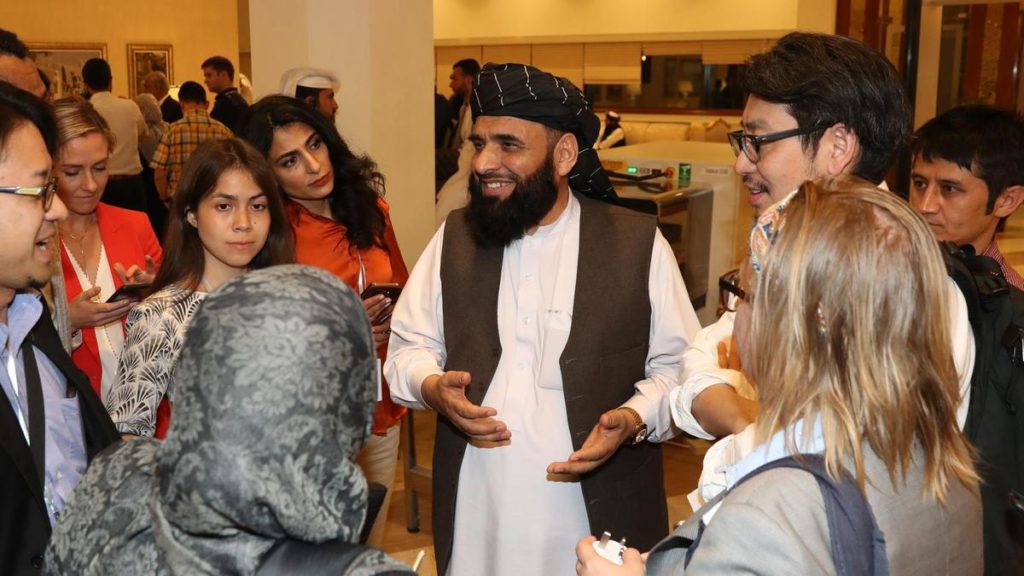In 2012, a novel titled The Taliban Cricket Club, by the writer Timeri N Murari, was published worldwide. Set in Kabul, its main protagonist was Rukhsana, a young journalist who chafed at the restrictions placed by the Taliban regime on Afghan women. Fired from her job at the fictional Kabul Daily, Rukhsana uses a pseudonym to file news stories for an Indian newspaper on life under Taliban rule.
Eventually, she employs her unique skillset — knowledge of cricket — to outwit the Taliban’s attempt at complete control. Rukhsana coaches her brother and male cousins in order for them to win a government-organised cricket tournament. In this way, she is able to secretly challenge the Taliban’s stark injunction as described in the book: “Women must be seen only in the home and in the grave”. She makes her mark as an educated Afghan woman and “a good off-spinner”.
The Taliban Cricket Club is not a great literary work, but it does accomplish something few other books on Afghan women had managed until then. It makes the dreadful reality of Taliban rule easier to imagine and comprehend. Humans, as the philosopher Yuval Noah Harari says, “think in stories”.
Events in recent days suggest that Rukhsana’s resistance to the severe constraints imposed by the Taliban are becoming relevant once again. The US is talking to the Taliban about withdrawing troops. Intra-Afghan talks have been held in Doha, jointly organised by Qatar and Germany. Recently, the Taliban delegation indicated a new willingness to acknowledge women’s rights. The Taliban representatives were in the same room as Afghan women who weren’t related to them. They talked to the women and ate with them.
All of this has fed a new hopeful sense of coming change in Afghanistan. A new narrative is said to be taking shape, with the conflict-scarred country moving forward towards a brighter future, which is to be based on an intra-Afghan consensus. The US administration, which is understood to want a deal with the Taliban by September, has already been talking up the real and symbolic importance of what is under way.
Zalmay Khalilzad, US President Donald Trump’s special envoy for Afghanistan reconciliation, has denied the US wants to cut and run, abruptly ending the 18-year war it has prosecuted there. Instead, he insists, “We would like to leave a very positive legacy here”. And Alice Wells, acting US assistant secretary of state for South and Central Asia, has warned that Afghanistan’s future relationship with the US will “depend heavily” on preserving the gains made by women. “No current or future Afghan government should count on international donor support if that government restricts, represses or relegates Afghan women to second-class status,” she said.
The Americans may withdraw anyway, pronouncing themselves satisfied that Afghanistan is at peace
This is tough talk but the Americans may withdraw anyway, pronouncing themselves satisfied that Afghanistan is at peace. That may mean an unenforceable agreement with the Taliban both with respect to power sharing and gender rights.
Many difficulties lie ahead.
First, there are the discrepancies in various translations of the declaration agreed in Doha. The Pashtu version, the only one likely to be read by the majority of the Taliban’s supporters, reportedly had no mention of protecting women’s rights. Was this mendacity or merely a mistake? Is the Taliban pretending it will safeguard women’s rights while reassuring its core constituency there will be no compromise on ideological positions with respect to gender?
Second, consider the Associated Press report on an exchange from the Doha conference. It might have been either playful or ominous, depending on who you ask. The news agency quoted Asila Wardack, a female member of the Afghan peace council. She said two of the Taliban approached her and other female conference participants. The Taliban said they had heard a group of “ dangerous women “ were going to be at the meeting. One of the men added: “Please don’t give us a hard time.”
What could that possibly mean? Was it a jocular way for the Taliban to acknowledge women had a right to be angry? Is the Taliban now willing to accept their five years in power, from 1996, were horrific for women, who were barred from schools, colleges, offices and from any public presence except as veiled figures? Or did those two Taliban men speak in that way to Ms Wardak and other women because they honestly believe the female sex comprises harridans and termagants?
Finally, consider the “roadmap to peace” agreed between the Taliban and Afghan government representatives in Doha. The Taliban insisted the government representatives attend in a personal capacity, which means the roadmap doesn’t really have any official sanction. And the promised protections for women’s rights are to be within the vague and unspecified parameters of an “Islamic framework”. The Taliban could quite easily define the “framework” in terms of their past misogyny. There are bound to be theological differences about Islam’s view of women’s rights. The Taliban do not have political positions so much as religious ones. Political positions allow for compromise; moral ones do not.


